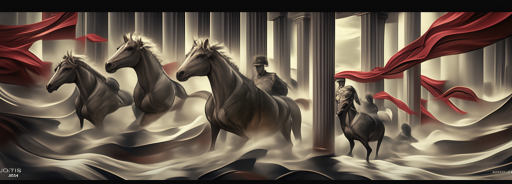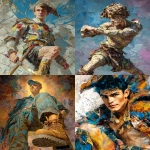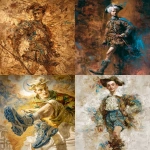Explore the Best AI Image Gallery

Unlocking Creativity: The Influence of AI in Graphic Design
The graphic design industry is undergoing a seismic shift as artificial intelligence (AI) becomes increasingly integrated into the creative process. Far from replacing artists, AI is enhancing their capabilities, expanding creative horizons, and enabling innovative approaches to design challenges. This blog post explores the impact of AI on the creative industry, its practical applications, ethical implications, and future trends that are grabbing the attention of designers worldwide.
The AI Impact on Creativity
AI technology is redefining traditional notions of creativity. Tools powered by AI, such as Adobe Sensei, allow designers to automate repetitive tasks, analyze trends, and generate ideas faster than ever before. By harnessing vast databases of design elements and styles, these tools enable graphic designers to innovate and experiment without the constraint of time.
For instance, AI-driven platforms can suggest color palettes, layout structures, and font pairings that enhance the aesthetic appeal of designs. By analyzing consumer preferences, the software can even tailor designs to specific target audiences, thereby improving engagement and marketability.
Potential Uses of AI in Graphic Design
The integration of AI in graphic design opens up a wealth of possibilities:
- Automated Design Generation: Software like Canva utilizes machine learning algorithms to suggest layouts and design templates customized to user input.
- Image Recognition and Editing: AI tools can identify objects and features in images, enabling designers to precisely edit elements without manual input.
- Predictive Analytics: By analyzing historical design data, AI can predict future trends, helping designers stay ahead of the curve.
- Personal Branding: AI can curate social media feeds, creating a consistent personal brand by selecting the most visually appealing content.
Ethical Considerations
As with any groundbreaking technology, the rise of AI in graphic design brings about essential ethical discussions. Questions about authorship, copyright, and originality are at the forefront. If an AI generates a design, who owns the rights to that work? Are human designers undervalued in this new landscape of machine-assisted creativity?
Furthermore, the reliance on AI can cause homogenization in design aesthetics, undermining the unique expression that individuality offers. As such, discussions surrounding the balance between human creativity and machine-generated output are crucial for defining the future of graphic design.
Future Trends in AI and Graphic Design
Looking ahead, the relationship between AI and graphic design is poised to evolve dramatically:
- Increased Collaboration: The future may see human designers working more closely alongside AI tools, using them as collaborative partners rather than mere assistants.
- Advancements in Natural Language Processing: As AI becomes better at understanding conversational language, designers may simply communicate their ideas verbally, with machines translating them into visually appealing designs.
- Enhanced Customization: Future AI tools will likely allow for even more personalized design experiences, giving brands the ability to cater designs specifically to individual consumers based on their preferences and behavior.
- New Aesthetic Movements: The fusion of human intuition and machine learning could lead to the emergence of entirely new design movements that challenge traditional paradigms.
Conclusion
AI is not just a tool for efficiency in graphic design; it represents a transformative force that is reshaping creative processes and conceptual frameworks. As graphic designers embrace AI, they must also be mindful of the ethical considerations and strive for a harmonious balance between human creativity and technological advancements. By doing so, they can unlock a new realm of creative expression that marries innovation with artistry.






](https://images.ai-img.art/thumbnails/150/8c3bd422d50d35735d8fb33bd314a79e30e5b150129d5d09bdad822a2007593f.webp)

](https://images.ai-img.art/thumbnails/150/1614d64dd7156c95db952258978be809eb3db8cea4453fec69c49cbdfe63fa94.webp)
](https://images.ai-img.art/thumbnails/150/3a60737a5b67fa252207ad1ae6db245a26284f53fb5846996bb34515b39ff269.webp)


